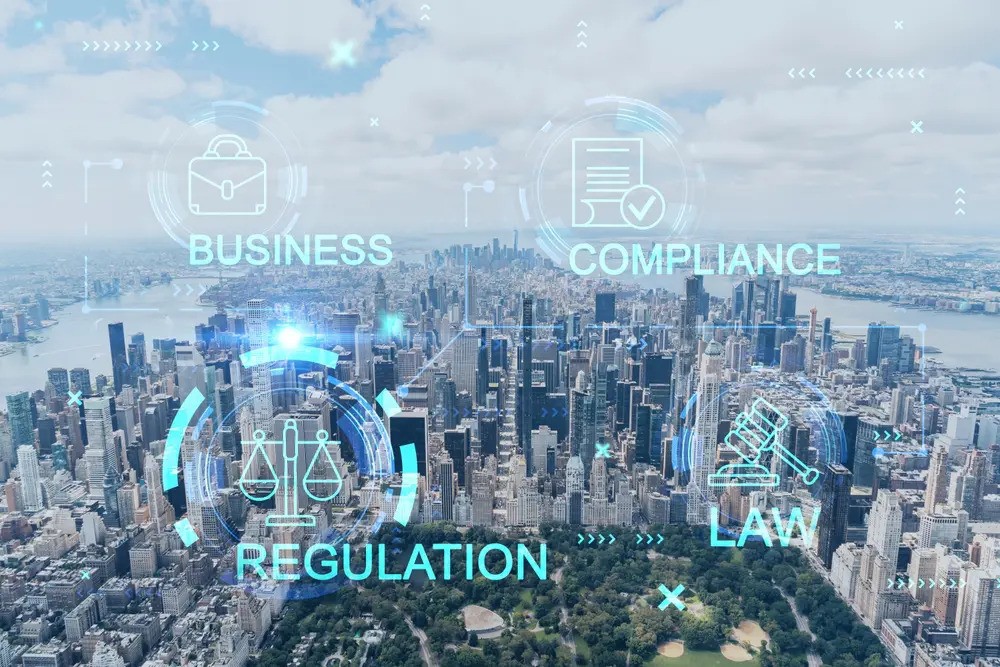
5 minute read
Emissions or Fines: Understanding Why Local Law 97 Matters
Emissions or Fines: Understanding Why Local Law 97 Matters
I. Introduction
Amidst the ever-growing urgency to combat climate change, cities around the globe are stepping up with bold legislative initiatives aimed at curbing greenhouse gas emissions. New York City, a leader in urban sustainability efforts, has enacted Local Law 97, a pivotal component of the Climate Mobilization Act. As buildings stand tall amidst the city’s iconic skyline, they also contribute significantly to the city’s carbon footprint. Local Law 97 aims to transform these structures into allies against climate change by setting ambitious emission standards. This landmark regulation is not just a local policy but a bellwether in the fight for a more sustainable urban future.
II. Background of Local Law 97
Passed in 2019, Local Law 97 represents a proactive step taken by New York City to meet the ambitious greenhouse gas reduction goals outlined in the landmark Paris Agreement. The law targets the heart of the city’s emission problems: its buildings. To reduce building-based emissions by 40% by 2030 and 80% by 2050, Local Law 97 is one of the most stringent climate laws for buildings globally, promising to reshape the city’s skyline into a model of sustainability.
III. The Mechanisms of Local Law 97
Local Law 97 applies to most buildings over 25,000 square feet, which covers a significant portion of the city’s real estate. The law sets forth a carbon emission limit based on occupancy classifications with higher fines imposed on properties exceeding their specific carbon intensity thresholds. For buildings that don’t comply, stiff penalties await: they could face annual fines amounting to hundreds of thousands, or even millions, of dollars based on the degree by which they exceed the limits.
There are exemptions and special circumstances considered within the law to ensure fairness and feasibility. These include provisions for buildings that have critical energy uses, such as hospitals or those that house energy-intensive activities.
IV. The Implications of Local Law 97
The ripples of Local Law 97 will be felt wide and deep across various industries. The real estate market is expected to undergo a significant transformation, with sustainability becoming a substantial factor in property valuation. Construction industries are gearing up for a green overhaul, anticipating increased demand for retrofitting services. For property owners, the law presents a complex matrix of costs, benefits, and challenges. While initial compliance investments may be substantial, benefits include energy savings and increased property values. With climate change’s threat looming larger by the day, the law’s projected environmental benefits — reduced emissions and a cleaner, healthier city — are inarguably vital.
V. The Critiques of Local Law 97
Despite its noble intentions, Local Law 97 has its detractors. Critics argue that the law places an undue economic burden on property owners, with fears that these costs will trickle down to tenants. Others question the law’s overall effectiveness and fairness, pointing out that energy-efficient buildings might still face fines due to the nature of their occupancy. These concerns are part of a broader dialogue on balancing economic realities with environmental imperatives.
VI. Local Law 97 and the Future of Green Regulation
As a pioneering piece of legislation, Local Law 97 sets a precedent for municipalities worldwide. The law’s implementation and outcomes are being closely watched as a potential model for future green regulation. Other cities and states may follow suit with similar laws, sparking a much-needed wave of investment in sustainable infrastructure and potentially redefining urban living standards on a global scale.
VII. How to Comply with Local Law 97
For property owners, navigating Local Law 97 requires a strategy that integrates energy efficiency upgrades, renewable energy sourcing, and, if necessary, the purchase of renewable energy credits. There’s a wealth of resources available, from consultancy services specializing in environmental compliance to city-provided support systems. Owners must prioritize understanding their building’s current emission levels, exploring retrofitting options, and staying informed on upcoming regulations.
VIII. Conclusion
New York City’s Local Law 97 is more than just another regulation; it embodies a strong commitment to environmental stewardship and a proactive stance against climate change. While it presents substantial challenges for property owners and the real estate industry, it also offers a blueprint for a greener tomorrow. By educating themselves, being proactive in retrofitting efforts, and leveraging available resources, stakeholders can not only comply with Local Law 97 but can also contribute to a larger, globally significant environmental solution. The law is a clarion call for everyone to be part of the change needed to safeguard our city’s, and our planet’s, future.
VertPro serves as a resourceful platform for property owners and managers seeking to enhance their buildings’ energy efficiency. The site offers a range of services, including Commercial Energy Audits, Benchmark Compliance consultancy, and a Construction Marketplace. At the heart of VertPro® is a suite of SaaS technology-based solutions designed to assist in navigating the complexities of Energy Benchmarking and Energy Audits/RCx Plus, while ensuring adherence to over 60 Energy Benchmarking and Energy Efficiency Laws across the country.
For those looking to improve their property’s energy usage and operational value, VertPro.com provides a diverse array of tools and information. The site aims to facilitate a better understanding of energy efficiency practices and legislation, helping building owners and property managers make informed decisions about their energy strategies while complying with all energy ordinances and laws.


